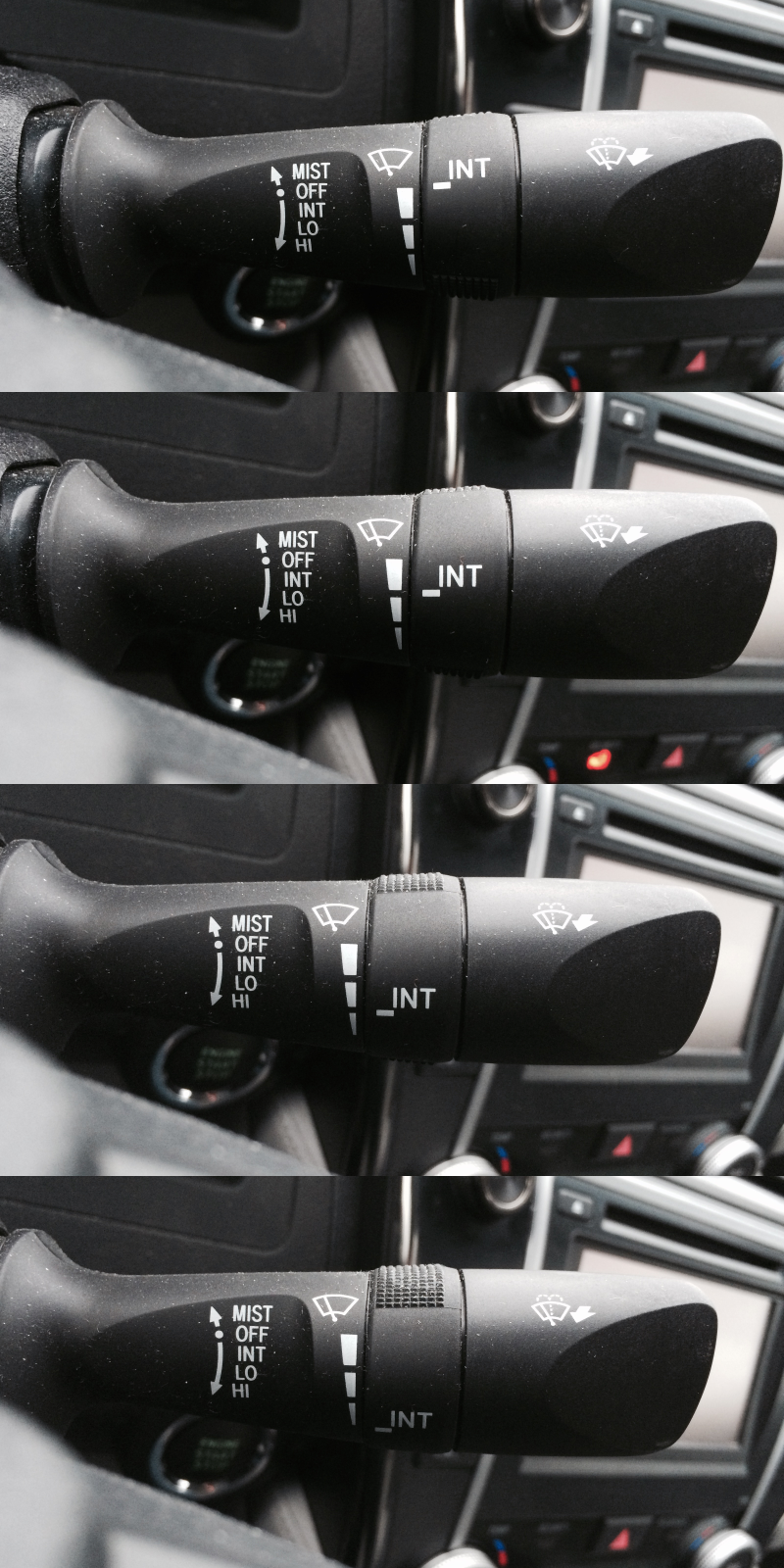Car UI
April 5, 2015 at 4:26 PM by Dr. Drang
It’s common for Apple users to say they wish Apple could take over their car’s user interface because the auto manufacturers do such a bad job of it. This is typically a comment on the electronic user interface, as many cars now have a little computer screen in the center of the dashboard with poorly laid out buttons and displays. I agree and take it further: I wish Apple (or anyone who thinks carefully about design for use) would have a go at the physical controls, too.
My pet peeve on my Toyota Camry is its windshield wiper stalk. It grows out of the right side of the steering column and has a variety of controls. The stalk as a whole can move up and down into one of five positions shown in the little graphic near the left side of the photos below. From the off position, you can move it down into the intermittent position, the low speed position, and the high speed position—the heavier the rain, the further down you move the stalk.1

In the middle of the stalk is a rotating collar that provides a sort of subcontrol for the intermittent wiper mode. As you can see in the four photos, turning the collar moves a horizontal marker on the collar up or down to align with one of four positions on what looks like a small bar chart. It’s how this collar works that bugs me.
When the wiper is in intermittent mode, it moves at the same speed as it does in low-speed mode. The difference is that it pauses between wipes. How long it pauses is what’s controlled by the collar position. To me, twisting the collar to move the marker down should make the pause between wipes shorter. This would be consistent with the way the stalk itself is moved: down to handle heavier rain. This is also consistent with the quasi-bar chart graphic, which I interpret as a graph of the pause, or interval, between wipes.
You will not be surprised to learn that the collar works exactly the opposite of how I think it should work. The interval between wipes increases as you turn the collar to move the marker down; the bottom position is for the lightest sprinkle. For the stalk, down equals heavier rain; but for the collar, down equals lighter rain.
The chart is apparently meant to represent the frequency of wiping, not the interval between wipes, despite the INT label on the marker. Yes, I know they mean INT to be interpreted as intermittent, not interval, but intermittent is not a quantity that can be graphed. Interval is. Which is why every time I look at that control, my mind says interval and I want to twist it the wrong way.2
In the couple of years I’ve had this car, I’ve trained myself to turn the collar the opposite way that both my instincts and my eyes tell me to turn it. Maybe this is Toyota’s way of keeping my brain active and alert. I’m looking forward to the next Camry model, in which the radio’s volume knob turns counter-clockwise to get louder.
-
The mist position, which is a one-time wipe, is a momentary position that the stalk won’t stay in. It doesn’t concern us here. Thanks to mediummike on Twitter for fixing this. ↩
-
Toyota’s designers are apparently fans of Fourier analysis and prefer the frequency domain to the time domain. Cooley and Tukey would be proud of them. ↩
